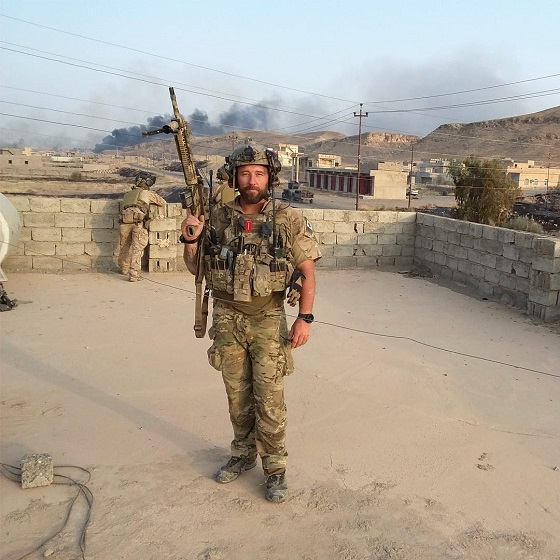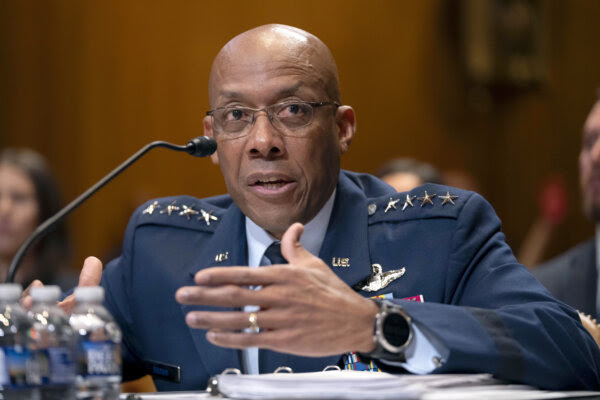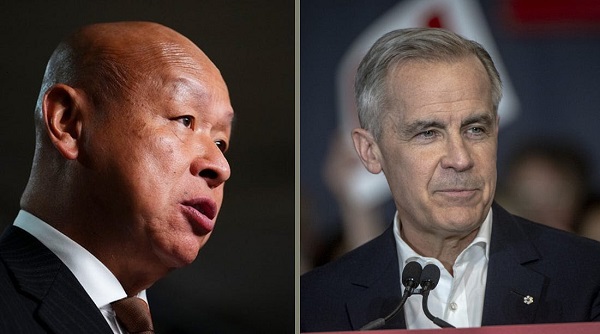armed forces
Canadian veterans battle invisible wounds of moral injury and addiction

Moral injury, a unique psychological trauma, drives many Canadian veterans to substance use disorders as they struggle with inadequate support
When he was stationed in Bosnia in 1994, Steve Lamrock would drive a truck loaded with food through villages full of hungry people.
As a Canadian Armed Forces platoon quartermaster, one of Lamrock’s duties was transporting food to other soldiers involved in the United Nations Protection Force’s peacekeeping mission in the war-torn country.
“I had people starving to death, children starving to death,” he recalled, his wife seated beside him for support. “I could see, weekly, the deterioration in certain people in the community and the elderly from a lack of nutrition.”
Often, there was a surplus of rations.
“The UN policy was, if you can’t give exactly equal to both sides, you don’t give anything away,” he said, adding that it could trigger violent raids if you provided food to just one faction.
“So we would throw out food when there’s people starving to death.”
Moral dilemmas like these haunted Lamrock long after he retired from the military in 2009. Tormented by nightmares, he turned to alcohol to cope. “When I drank so much I passed out, I wouldn’t dream or remember the dreams as vividly or as often,” he said.
Lamrock — whose 24-year military career included tours in Afghanistan, Bosnia, Croatia, Kosovo and Iraq — was identified as suffering from psychological distress caused by the perception of having violated one’s moral or ethical beliefs. Experts are now calling this moral injury.
Moral injury is not formally recognized in the Diagnostic and Statistical Manual of Mental Disorders, an authoritative manual on mental disorders. But experts and veterans say moral injury affects many individuals who serve in the military, and requires better institutional support and treatment than are currently available.
Moral injury and addiction
“[Moral injury presents as] shame, guilt and anger that occurs when someone is exposed to an event that goes against their moral values, standards or ethics,” said Dr. Don Richardson, a psychiatrist and scientific director of the MacDonald Franklin Operational Stress Injury Research Centre in London, Ont. The centre studies the impact of stress injuries on military personnel, veterans and first responders.
Moral injury can result not only from witnessing or causing harm, but also from being affected by an organization’s actions or inactions, Richardson says.
The term moral injury was first introduced in the 1990s by American psychiatrist Dr. Jonathan Shay, who worked with veterans of the Vietnam War. It gained wider recognition following the Iraq and Afghanistan wars, when traditional treatments for post-traumatic stress disorder (PTSD) — such as Cognitive Behavioural Therapy — were proving to be only partially effective.
While fear is often at the core of traditional PTSD cases, feelings of guilt, shame, anger and betrayal are more strongly linked to cases of moral injury, says Dr. Anthony Nazarov, associate director of the MacDonald Franklin Operational Stress Injury Research Centre and an expert on moral injury.
Nearly 60 per cent of Canadian Armed Forces personnel deployed in NATO operations in Afghanistan reported exposure to morally injurious events, according to a 2018 study co-authored by Nazarov. Those exposed to such events demonstrated a greater likelihood of developing PTSD and major depressive disorders.
Dr. Ronald Shore, a research scientist and assistant professor in psychiatry at Queen’s University, says individuals suffering from moral injury often develop coping strategies due to a lack of support to help them process traumatic experiences.
One common coping mechanism is substance use, he says.
“You’re constantly feeling like something is wrong with you, that you’ve done something wrong … that leads to that self-regulation with addiction,” Shore said.
Lamrock says his experiences in Bosnia — and the habits he developed afterwards — deeply affected him and his family.
He recalled promising his young daughter they would do something fun after a night’s rest. “‘No, you won’t, Daddy, you won’t get up,’” she had replied, knowing he would likely be too hungover.
“That was my motivation to quit,” he said.
Betrayal
It is common for veterans suffering from moral injury to feel angry or betrayed due to the military’s actions or lack of support.
“[A person feels] betrayed by policies, betrayed by leaders, betrayed by organizations,” said Nazarov.
This has been the case for Gordon Hurley, 37, whose 14-year career in the Canadian Armed Forces included tours in Afghanistan, Africa and Iraq.
“When you get out, there’s nothing,” Hurley said. “If you think that Veterans Affairs is going to support you … they will, but you’re gonna have to fight for it.”
Hurley was medically discharged from the military in 2021 due to various physical and mental health challenges, including PTSD. He says Veterans Affairs requires him to continually prove the severity of his injuries to maintain disability support and benefits, such as reimbursements for retinal surgery and rehabilitation.
Hurley says that having to repeatedly prove his injuries to Veterans Affairs has been frustrating. “You were the ones who released me from the military … for these injuries, but now you are asking me to prove them back to you?” he said.
The Canadian Armed Forces redirected inquiries about support for veterans with moral injury and substance use disorder to Veterans Affairs Canada.
In an emailed statement to Canadian Affairs, Veterans Affairs spokesperson Josh Bueckert said mental health-care practitioners who work with veterans are “well aware of moral injury” and recognize the condition is often associated with operational stress injuries.
Bueckert said the department provides funding to organizations such as the Atlas Institute for Veterans and Families, which has a moral injury toolkit for veterans.
He also noted the department offers veterans a range of mental health resources, including access to 11 operational stress injury clinics and a network of 12,000 mental health professionals. Bueckert said veterans also have access to treatments for substance use disorder and for conditions such as “trauma-and-stressor-related disorders.”
Hurley acknowledges all these benefits are available, but says they are hard-won.
“All those benefits listed you get, but unless your condition has been [approved by the department], you do not receive those benefits,” he said.
‘Never-ending battle’
Josh Muir, 49, served nearly 14 years in the military and was deployed twice to Afghanistan. After sustaining soft tissue damage, hearing damage and spinal injuries in a 2010 improvised explosive device attack, he was medically discharged from the military — something he says he opposed because the military had become his entire identity.
“As soon as I’ve crossed this threshold, I no longer really have a clear picture of who I am, what I am, what use I might play in the future, and where to go from here,” he said.
He described feeling discarded by the military. “I was very quickly turned from a valuable asset into a liability that needed to be rid of as quickly and as expeditiously as possible,” said Muir, who turned to alcohol as a crutch.
 |
Canadian Forces veteran Josh Muir and his son Max at a beach in Vancouver, April 2024. [Photo Credit: Atlas Institute for Veterans and Families]
Shore, of Queen’s University, says recovering from moral injury and substance use disorder can require rebuilding one’s identity as the sense of purpose and belonging one gets from being part of the military fades.
Therapies such as acceptance and commitment therapy help veterans accept difficult emotions and commit to taking actions that align with their values. Another treatment called narrative therapy helps veterans separate their problems from their identity. These therapies can be effective at helping veterans recover, says Richardson, of the MacDonald Franklin Operational Stress Injury Research Centre.
Richardson also encourages veterans to seek peer support through groups like Operational Stress Injury Social Support or True Patriot Love Foundation.
David Fascinato joined the military in 2005 and served in psychological operations, including a deployment to Afghanistan in 2010.
Fascinato, who has since left the military, has struggled with mental health issues and moral injury. He says he has come to realize that veterans need organizations that offer community, purpose and tools to rebuild their sense of self.
This realization led him to co-found Team Rubicon Canada, a volunteer disaster relief organization that conducts missions in Canada and abroad. “Doing things with others for others, that’s where it helps reduce substance misuse and provides an off-ramp,” he said.
Subscribe for free to get BTN’s latest news and analysis, or donate to our journalism fund.
Fascinato has also found purpose by serving as executive director of Heroic Hearts Project Canada, an organization that supports veterans and first responders with alternative mental health treatments such as psychedelics.
Richardson and Shore view psychedelic-assisted therapy — which uses psychedelics to disrupt ingrained neural patterns — as a promising treatment for moral injury and substance use disorder..
Shore says support for psychedelic trials with veterans is still limited due to safety concerns and insufficient research. However, Canadian veterans are seeking psychedelic therapy in overseas retreats in places like Mexico and Peru.
Hurley says he was only able to recover from his alcoholism after seeking treatment at a psychedelic retreat in Tijuana, Mexico in 2022. “Only after I did ibogaine did I get released from [alcohol addiction],” he said, referring to a type of psychedelic drug.
While the production, sale and possession of psychedelics remain illegal in Canada, Health Canada in 2023 amended its Special Access Program, which allows health-care providers to request psychedelic medications for patients with life-threatening or treatment-resistant conditions.
In Muir’s case, he was able to gain control of his addiction and mental health issues after completing a two-month residential program at a treatment centre on Vancouver Island. The cost of the program was covered by Veterans Affairs.
While Muir is grateful to have his treatment costs covered, he says he would like to see Veterans Affairs generally improve the support it offers veterans, including offering more personalized assistance in the transition to civilian life.
He describes his experience with the Canadian Armed Forces’ transition program as taking in “information via fire hose,” with overwhelming seminars and a lack of personal guidance to navigate the process.
“There’s little services and ceremonies,” said Muir. “But ultimately you have to go back to you being a small cog in a large machine.”
“I felt like I was going to become Army Surplus, just like the items in the store that sit there after their function has been superseded by newer models.”
“I think it’s absurd,” said Fascinato. “We have to pick up the proverbial sword and shield, or in this case pen and pad of paper, and seemingly wage this never-ending battle for access to care that shouldn’t be this difficult to get.”
This article was produced through the Breaking Needles Fellowship Program, which provided a grant to Canadian Affairs, a digital media outlet, to fund journalism exploring addiction and crime in Canada. Articles produced through the Fellowship are co-published by Break The Needle and Canadian Affairs.
If you want to help us commission more high-quality journalism, consider getting a voluntary paid subscription.
armed forces
Canada’s Military is Collapsing. Without Urgent Action, We Won’t Be Able To Defend Ourselves

From the Frontier Centre for Public Policy
By David Leis
Decades of underfunding and political neglect have left our military weak and unprepared
What Lt.-Gen (retired) Michel Maisonneuve (ret.) told me about Canada’s military was nothing short of alarming. He didn’t mince words—our armed forces are in dire straits. If we don’t act now, Canada will not only be unable to defend itself, but it will cease to be taken seriously by our allies, many of whom are already losing patience with our military decline.
Maisonneuve has seen firsthand what a functioning military looks like. He has served at the highest levels, working alongside our allies in NATO, and he knows exactly what Canada is failing to do. “We are no longer at the table when major defence decisions are made,” he told me. “The Americans don’t ask us what we think anymore because they know we can’t contribute.” That is a stunning indictment of where we now stand—a country that was once respected for its ability to punch above its weight militarily has been reduced to an afterthought.
The problem, as Maisonneuve laid out, is both simple and staggering: Canada doesn’t take its defence seriously anymore. The government has allowed our forces to wither. The Air Force is still buying CF-18s from the 1980s because the long-delayed F-35 procurement is years behind schedule. The Navy, once a competent maritime force, is barely functional, with no operational submarines and a fleet that is nowhere near what is needed to patrol our vast coastlines.
Meanwhile, the Army is struggling to recruit and retain soldiers, leaving its numbers dangerously low. “We have an Army in name only,” Maisonneuve said. “If we were called upon tomorrow to deploy a fully operational combat force, we couldn’t do it.”
Even more shocking is the state of readiness of our troops. A recent report found that 75 per cent of Canadian military personnel are overweight. Maisonneuve didn’t sugarcoat it:
“It’s unacceptable. We are supposed to be training warriors, not watching fitness standards collapse.” When the people entrusted with defending our country are struggling with basic physical fitness, it speaks to something much deeper—an institutional rot that has infected the entire system. Our allies have noticed. Canada was locked out of AUKUS, the military alliance between the U.S., the U.K. and Australia. “It wasn’t an oversight,” Maisonneuve explained. “It was a deliberate snub. The Americans don’t see us as a serious defence partner anymore.” That snub should have been a wake-up call. Instead, our government shrugged it off.
Meanwhile, Washington is openly questioning Canada’s value in NATO. The Americans see the numbers—Canada refuses to meet even the minimum defence spending requirement of two per cent of GDP. Instead of fulfilling our obligations, we offer up empty promises and expect others to pick up the slack.
Maisonneuve is blunt about what needs to be done. “First, we need to fully fund the military—and that means not just hitting the NATO target but exceeding it. Our allies spend real money on their defence because they understand that security is not optional.” He suggests Canada should aim for at least 2.5 per cent of GDP, not just as a show of commitment but as a necessity to rebuild our capabilities. Beyond money, Maisonneuve argues that military culture must be restored.
“We’ve allowed ideology to creep into the ranks. The military’s primary function is to defend the nation, not to serve as a social experiment,” he said. “We need to get back to training warriors, not worrying about whether we’re ticking the right diversity boxes.” He believes a return to a warrior ethos is essential— without it, the military will remain directionless.
Procurement is another disaster that Maisonneuve insists must be fixed immediately. “We’ve spent years dithering on replacing equipment, and every delay puts us further behind,” he said. The F-35 deal should have been signed years ago, but political hesitation means we won’t see a full fleet for years. The Navy urgently needs new submarines and icebreakers, especially to secure the Arctic, where other global powers, particularly Russia, are ramping up their presence.
The biggest issue, though, is manpower. “We need to rebuild the forces, period,” Maisonneuve told me. “That means recruiting, training, and retaining soldiers, and we are failing at all three.” He even suggested that Canada should consider implementing a national service requirement, a move that would not only increase troop numbers but also instill a sense of duty and responsibility in younger generations. “We used to be a country that took security seriously,” he said. “What happened?”
That’s the question, isn’t it? What happened to Canada? How did we go from being a country that contributed meaningfully to global security to one that can’t even defend itself? The reality is that successive governments have let this happen—first by neglecting funding, then by letting bureaucracy suffocate procurement, and finally by allowing the core purpose of the military to be diluted.
Maisonneuve is clear: Canada must act now, or it will cease to be taken seriously.
David Leis is President and CEO of the Frontier Centre for Public Policy and host of the Leaders on the Frontier podcast
armed forces
Trump fires chairman of Joint Chiefs of Staff, appoints new military leader


From the Daily Caller News Foundation
By Mariane Angela
President Donald Trump announced Friday the dismissal of General Charles Brown, the current Chairman of the Joint Chiefs of Staff.
In a post on Truth Social, Trump expressed his gratitude toward Brown for his extensive contributions and leadership, wishing him and his family a prosperous future. Brown’s departure marks a pivotal moment in U.S. military leadership following over 40 years of service.
“I want to thank General Charles “CQ” Brown for his over 40 years of service to our country, including as our current Chairman of the Joint Chiefs of Staff. He is a fine gentleman and an outstanding leader, and I wish a great future for him and his family,” Trump wrote.
Simultaneously, Trump introduced his nominee for Brown’s successor.
“Today, I am honored to announce that I am nominating Air Force Lieutenant General Dan “Razin” Caine to be the next Chairman of the Joint Chiefs of Staff. General Caine is an accomplished pilot, national security expert, successful entrepreneur, and a “warfighter” with significant interagency and special operations experience,” Trump said.
Trump said Caine’s appointment comes after he was overlooked for advancement during former President Joe Biden’s presidency.
“General Caine was passed over for promotion by Sleepy Joe Biden. But not anymore! Alongside Secretary Pete Hegseth, General Caine and our military will restore peace through strength, put America First, and rebuild our military,” Trump said. President Trump also announced plans to appoint five additional senior military officials, tasks he has delegated to Secretary Hegseth.
It was reported Thursday that Hegseth plans to dismiss Brown as part of President Trump’s commitment to eliminate “wokeness” from the military. Brown reportedly appears on a list of proposed removals submitted to Congress.
Brown had previously expressed his wish to retain his position even after Trump took office, and according to sources speaking to NBC News in Dec. 2024, Trump seemingly moderated his views on the general. Biden nominated Brown as chairman in 2023, and despite a heated confirmation hearing where senators scrutinized his alleged implementation of racial quotas in Air Force hiring practices, he was confirmed.
Meanwhile, Brown’s replacement, Caine, took office as the associate director for Military Affairs at the CIA on Nov. 3, 2021, after serving as the director of Special Programs at the Pentagon. Lt. Gen. Dan Caine, an F-16 pilot with extensive experience including over 150 combat hours, was commissioned in 1990 and has held numerous key roles, from the White House staff to special operations, and balances his military career with entrepreneurial ventures.
-

 2025 Federal Election2 days ago
2025 Federal Election2 days agoMORE OF THE SAME: Mark Carney Admits He Will Not Repeal the Liberal’s Bill C-69 – The ‘No Pipelines’ Bill
-

 2025 Federal Election2 days ago
2025 Federal Election2 days ago‘Coordinated and Alarming’: Allegations of Chinese Voter Suppression in 2021 Race That Flipped Toronto Riding to Liberals and Paul Chiang
-

 2025 Federal Election1 day ago
2025 Federal Election1 day ago‘I’m Cautiously Optimistic’: Doug Ford Strongly Recommends Canada ‘Not To Retaliate’ Against Trump’s Tariffs
-

 Business1 day ago
Business1 day agoCalifornia planning to double film tax credits amid industry decline
-

 Alberta2 days ago
Alberta2 days agoEnergy sector will fuel Alberta economy and Canada’s exports for many years to come
-

 Business1 day ago
Business1 day agoCanada may escape the worst as Trump declares America’s economic independence with Liberation Day tariffs
-

 Alberta1 day ago
Alberta1 day agoBig win for Alberta and Canada: Statement from Premier Smith
-

 2025 Federal Election2 days ago
2025 Federal Election2 days agoDon’t let the Liberals fool you on electric cars







